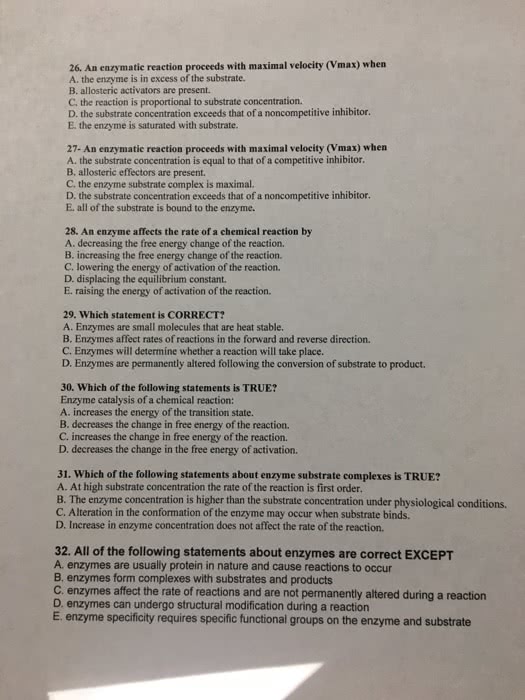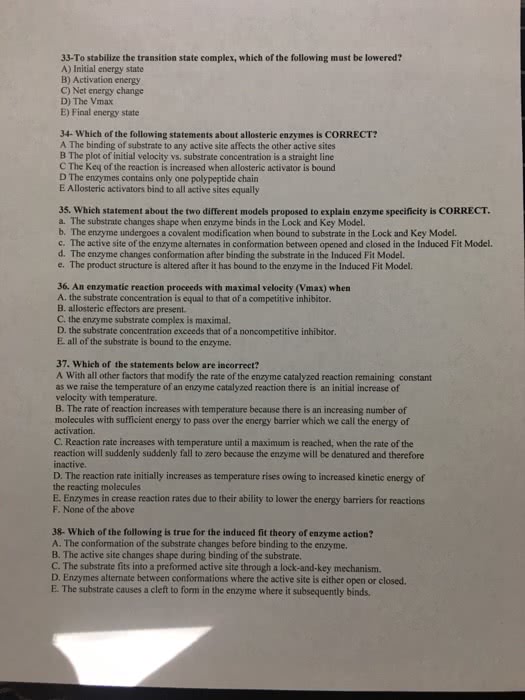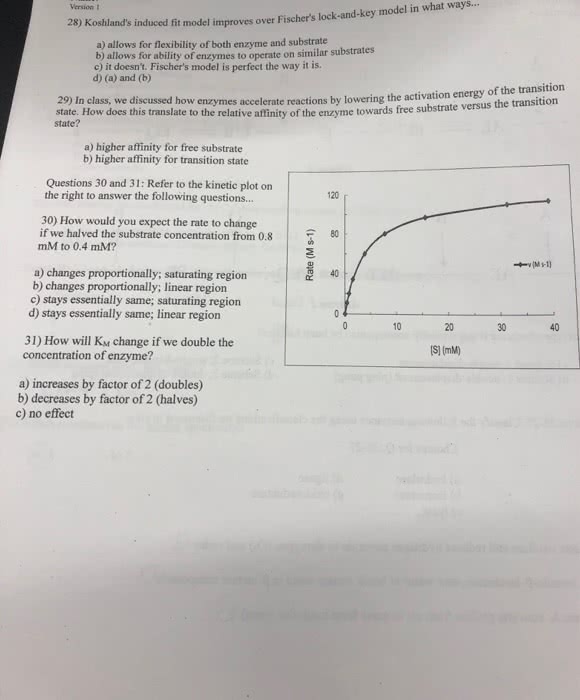Kinesiology 2230A/B Lecture Notes - Lecture 3: Acetyl-Coa, Manganese, Reaction Rate
29 views6 pages
15 Jan 2019
School
Department
Course
Professor
Document Summary
80% of the time it is low intensity. The effect of the catalyst (enzyme) is to lower the free energy of activation for the reaction a. Enzyme changes structure of substrate so it fits better. Raising the temperature raises the average energy of a molecules increases reaction rate. In contrast, the average free energy of a molecules remains the same in uncatalyzed versus catalyzed reactions (conducted at the same temperature) a. b. Increases in temperature change the attraction between different compounds (charges, polarity) i. Enzymes unravel and don"t fit anymore --> cant assist in reaction. Enables fit between enzyme and substrate to be much closer. Coenzyme: organic - derived from vitamins (acetyl coa) Cofactors/coenzymes have a non protein component necessary for particular reaction. Coenzymes have identical functions to cofactors but are organic. Affinity of the enzyme for substrate (greater/lesser attraction of enzyme for particular substrate) a. b. Will affect the rate of an enzyme catalyzed reaction.
Get access
Grade+20% off
$8 USD/m$10 USD/m
Billed $96 USD annually

Homework Help
Study Guides
Textbook Solutions
Class Notes
Textbook Notes
Booster Class
40 Verified Answers
Class+
$8 USD/m
Billed $96 USD annually

Homework Help
Study Guides
Textbook Solutions
Class Notes
Textbook Notes
Booster Class
30 Verified Answers


